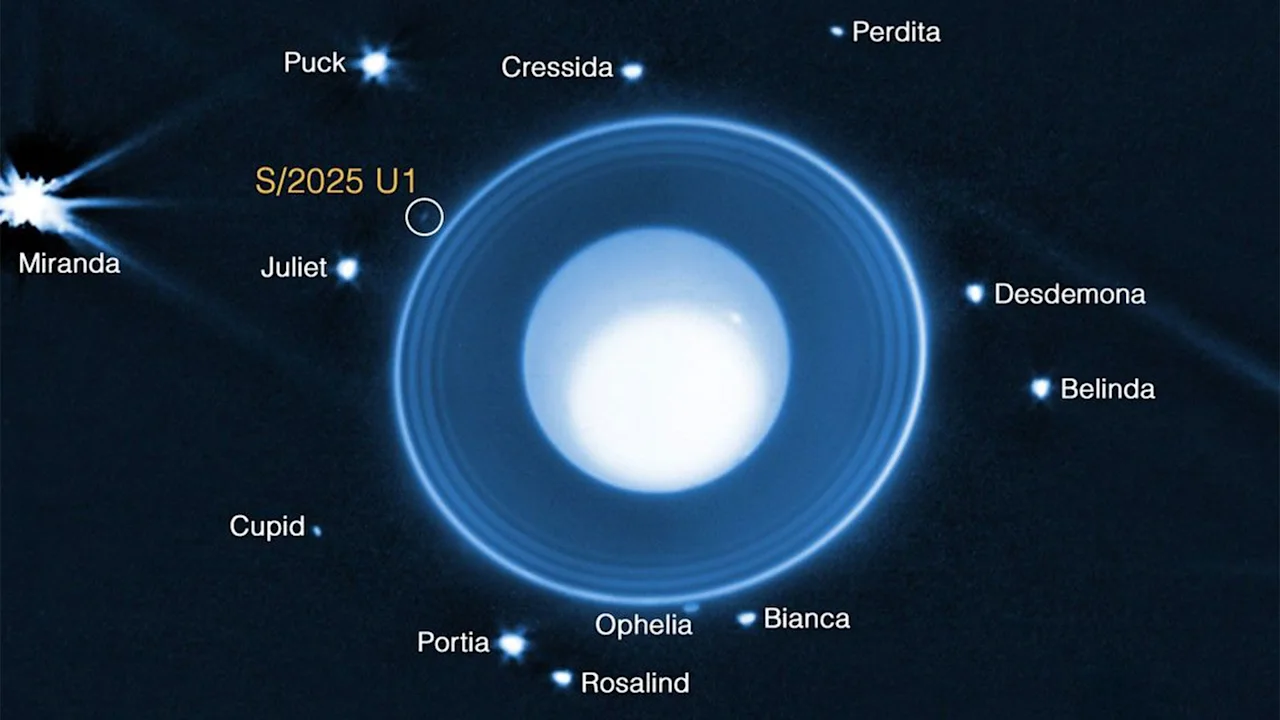NASA’s Webb Telescope spots a new moon orbiting Uranus

There’s a new moon on the block.
A research team peering into unexplored corners of space revealed this week that our solar system harbors a secret moon, tucked away near Uranus.
The moon was discovered by a research team using NASA’s James Webb Space Telescope, the successor to the Hubble Space Telescope. Like Hubble, the James Webb Space telescope was designed to snap images of deep space, helping scientists pursue some of the universe’s enduring mysteries.
The new moon was discovered in a set of 40-minute long exposure images taken by JWST’s near-infrared camera, which allows it to image fainter and more distant objects than Hubble. While JWST’s main mission is to explore the origins of the universe and the formation of the earliest galaxies, its sensitive cameras make many other kinds of discoveries possible along the way.
“It’s a small moon but a significant discovery, which is something that even NASA’s Voyager 2 spacecraft didn’t see during its flyby nearly 40 years ago,” Maryame El Moutamid, a lead scientist at Colorado’s Southwest Research Institute said of the discovery.
The newly found moon is an estimated six miles in diameter – a diminutive size that likely helped it elude Hubble. It orbits Uranus from within the orbit of that planet’s larger moons, which include Miranda, Ariel, Umbriel, Titania and Oberon. The discovery brings the total number of moons known to orbit Uranus up to 29.
“No other planet has as many small inner moons as Uranus, and their complex inter-relationships with the rings hint at a chaotic history that blurs the boundary between a ring system and a system of moons,” said Matthew Tiscareno, a SETI Institute scientist on the research team. “Moreover, the new moon is smaller and much fainter than the smallest of the previously known inner moons, making it likely that even more complexity remains to be discovered.”
What's Your Reaction?
 Like
0
Like
0
 Dislike
0
Dislike
0
 Love
0
Love
0
 Funny
0
Funny
0
 Angry
0
Angry
0
 Sad
0
Sad
0
 Wow
0
Wow
0



























































































